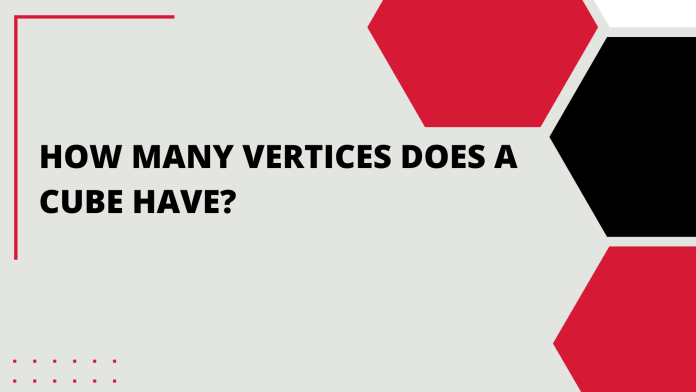When it comes to basic geometric shapes, the cube is one that most of us are familiar with. It’s a three-dimensional figure that has intrigued mathematicians and curious minds for centuries. One fundamental aspect of a cube that often piques interest is the number of vertices it possesses. In this article, we’ll delve into the world of cubes and answer the question: how many vertices does a cube have?
Understanding the Cube
Before we get into the specifics of vertices, let’s first ensure everyone is on the same page regarding what a cube is. A cube is a six-faced, three-dimensional shape where all sides are congruent squares. Each face of the cube is at a right angle to the adjacent faces, making it a regular polyhedron. It’s a symmetrical and fascinating geometric object that appears in various aspects of mathematics and everyday life.
The Anatomy of a Cube
To count the vertices of a cube, we need to understand its structure. A cube has:
1. Six Faces
A cube consists of six square faces. Each face is identical in shape and size.
2. Twelve Edges
The edges of a cube are the line segments where two faces meet. There are precisely twelve edges in a cube.
3. Eight Vertices
Now, let’s address the main question. A cube indeed has eight vertices. These are the points where three edges intersect, forming the corners of the cube.
Visualizing the Vertices
To make it easier to visualize the vertices of a cube, imagine it as a small box. At each corner of this box, you’ll find one of the eight vertices. These vertices are essential for defining the cube’s shape and are crucial in various mathematical calculations and geometric proofs.
Conclusion
In conclusion, a cube is a fascinating geometric shape with six faces, twelve edges, and eight vertices. These vertices define the corners of the cube and play a fundamental role in understanding its properties. Whether you’re a math enthusiast, a student, or someone simply curious about the world of geometry, knowing the number of vertices in a cube is a basic yet essential piece of knowledge.
If you want to explore more about cubes and their properties, consider diving into the world of geometry. Understanding shapes like cubes can open doors to a deeper appreciation of mathematics and its applications in our lives.
FAQs
1. Are all the vertices of a cube identical in nature?
- Yes, all eight vertices of a cube are identical in nature, as the cube is a regular polyhedron with congruent faces and angles.
2. Can you find cubes in the real world?
- Absolutely! Cubes are common in our daily lives. Examples include dice, Rubik’s cubes, and even perfectly cut sugar cubes.
3. What is the relationship between a cube and its vertices?
- The vertices of a cube define its shape and help us understand its properties, such as volume and surface area.
4. How do cubes relate to other geometric shapes?
- Cubes are a type of rectangular prism with all sides of equal length. They are related to other regular polyhedra and are often used in various mathematical calculations.
5. Are there any practical applications of understanding cube vertices?
- Yes, understanding cube vertices is crucial in fields like architecture, engineering, and computer graphics, where 3D modeling and spatial relationships are important.

